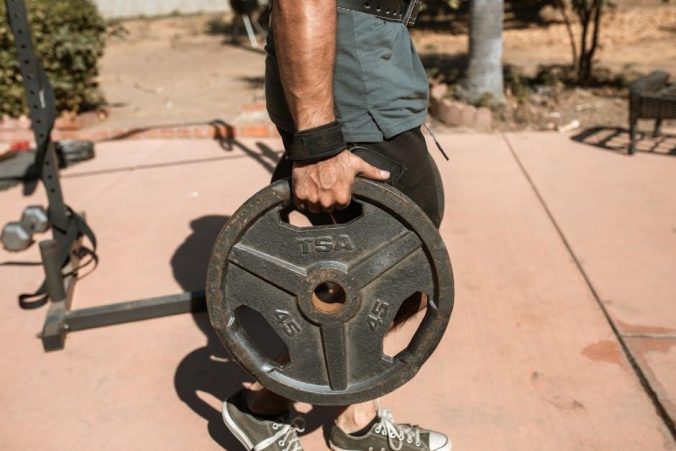The 2018 Chevrolet Malibu LT requires precise lifting points for safe 2-post lift use․ Ensure stability and avoid damage by referencing manufacturer guidelines and the Automotive Lift Institute’s recommendations․
Overview of Vehicle Lifting Safety
Vehicle lifting safety is critical to prevent damage and ensure stability․ Always use manufacturer-recommended lifting points to avoid chassis damage or safety risks․ The Automotive Lift Institute (ALI) provides guidelines for safe lifting practices․ Improper lifting can lead to structural damage or accidents․ Use appropriate tools and ensure the lift capacity matches the vehicle’s weight․ Never exceed the lift’s rated capacity․ Proper lifting techniques protect both the vehicle and the person performing the task․ Always follow safety protocols and manufacturer instructions for secure lifting․
Importance of Correct Lifting Points
Correct lifting points are essential for safety and preventing vehicle damage․ Using improper points can cause structural damage, instability, or even accidents; The Automotive Lift Institute (ALI) emphasizes adhering to manufacturer-recommended points to ensure safe lifting․ Proper lifting points distribute the vehicle’s weight evenly, maintaining balance and stability․ Neglecting these guidelines risks damaging the chassis or suspension components․ Always consult the vehicle’s manual or ALI’s guide for accurate lifting locations․ Correct lifting practices protect both the vehicle and the person performing the task, ensuring a secure and efficient process․

Safety Considerations for 2-Post Lifts
Ensure correct lifting points, check load capacity, and maintain balance․ Verify the lift suits the vehicle’s weight for secure and damage-free lifting․
General Safety Precautions
Always refer to the vehicle manufacturer’s manual for recommended lifting points․ Ensure the lift’s load capacity exceeds the vehicle’s weight․ Use appropriate adapters for trucks or SUVs․ Engage the lift’s locks to prevent movement․ Position jack stands for added stability․ Never rely solely on the lift; always use jack stands for support․ Ensure the area is clear of obstacles and personnel․ Conduct regular inspections of the lift and accessories to maintain safety standards․ Proper training is essential for operating 2-post lifts safely and effectively․
Understanding Load Capacity and Balance
Always verify the 2-post lift’s load capacity matches or exceeds the 2018 Malibu LT’s weight to avoid equipment failure․ Proper balance ensures even weight distribution, preventing instability․ Consult the lift’s manual and vehicle specifications to confirm compatibility․ Improper balance or exceeding capacity can lead to accidents or damage․ Ensure the vehicle is centered on the lift pads for optimal stability․ Manufacturer guidelines provide precise weight limits and balance points, crucial for safe operation․ Never exceed the recommended load capacity to maintain safety and equipment integrity during the lifting process․

Vehicle Structure and Lifting Points
The 2018 Malibu LT’s structure includes frame components designed to support its weight during lifting․ Identifying these points ensures safe and damage-free elevation using a 2-post lift system․
Identifying Frame and Unibody Components
For the 2018 Malibu LT, identifying the frame and unibody components is crucial for safe lifting․ The unibody construction provides specific points designed to bear the vehicle’s weight without deformation․ These areas are typically found near the front and rear suspension systems․ Always refer to the manufacturer’s guidelines to locate these points accurately․ Using the correct lifting points prevents damage to the vehicle’s structure and ensures a stable lift․ Proper identification ensures safety and efficiency during maintenance or repair tasks․
Difference Between 2-Post and 4-Post Lifts
A 2-post lift uses two vertical columns with arms to lift vehicles, ideal for maintenance and repairs․ It is compact and widely used in professional garages․ A 4-post lift, however, has four columns and is designed for parking or storage, offering greater stability but requiring more space․ Both lifts have distinct purposes, with 2-post lifts being more versatile for servicing and 4-post lifts better suited for long-term vehicle storage or display․
For the 2018 Malibu LT, a 2-post lift is recommended for most service tasks, as it provides efficient access while maintaining safety when used correctly․

Manufacturer-Recommended Lifting Points
The 2018 Malibu LT’s front and rear lifting points are clearly identified in the manufacturer’s guidelines and the Automotive Lift Institute’s (ALI) Vehicle Lifting Points Guide․
Front Lifting Points for 2018 Malibu LT
The front lifting points on the 2018 Malibu LT are located near the front axle and subframe․ They are designed to support the vehicle’s weight safely during lifting․ Always use the manufacturer-recommended points to avoid damage․ Ensure your jack or lift equipment fits these points properly, and consider using adapters for a secure fit․ Refer to the owner’s manual or the Automotive Lift Institute’s guidelines for precise locations and safe lifting practices․
Rear Lifting Points for 2018 Malibu LT
The rear lifting points of the 2018 Malibu LT are positioned near the rear axle and suspension components․ These points are specifically designed to bear the vehicle’s weight during lifting․ Use only the manufacturer-recommended locations to ensure safety and prevent damage․ Ensure your lifting equipment is compatible with these points, and refer to the owner’s manual or ALI guidelines for accurate placement․ Proper alignment and secure contact are crucial for a safe and efficient lifting process․ Always double-check the equipment setup before raising the vehicle․

Locating the Correct Lifting Points
Consult the owner’s manual or ALI guide for precise locations․ Use visual markers or tools to identify the reinforced steel points near the front and rear axles․
Front Lifting Point Locations
For the 2018 Malibu LT, the front lifting points are located near the front tire areas, just behind the wheel wells․ These points are reinforced to support the vehicle’s weight safely․ Use the pinch welds or the subframe as indicated in the owner’s manual or ALI guide․ Avoid using suspension components or axle parts to prevent damage․ Always position the lift arms snugly against the designated points to ensure stability and even weight distribution during the lifting process․
Rear Lifting Point Locations
The rear lifting points on the 2018 Malibu LT are located near the rear axle housing or subframe․ These points are designed to bear the vehicle’s weight safely․ Position the lift arms at the rear axle’s sturdy mounting points or the subframe reinforcements․ Avoid using suspension components or trailing arms․ Ensure the lift arms are snug and centered to maintain balance․ Refer to the ALI guide or manufacturer’s manual for precise locations to prevent damage and ensure a stable lift․ Proper alignment is critical for safe rear lifting operations․

Using a Hydraulic Jack with 2-Post Lift
Position the hydraulic jack at the vehicle’s designated front or rear lifting points․ Ensure the jack stands are secure and level before raising the 2018 Malibu LT․

Positioning the Jack for Safe Lifting
For the 2018 Malibu LT, locate the front lifting points near the front axle or rear points behind the wheel wells․ Place the hydraulic jack at these spots, ensuring even weight distribution․ Always refer to the manufacturer’s manual for exact locations to avoid damage․ Use jack stands for added stability and safety․ Ensure the vehicle is on level ground before lifting․ Never rely solely on the jack; always secure with stands․ This prevents accidents and ensures a stable lift․
Securing the Vehicle on Jack Stands
After lifting the 2018 Malibu LT with a hydraulic jack, position jack stands at the recommended lifting points to ensure stability․ Place stands under the vehicle’s frame or designated lift areas, avoiding suspension components․ Lower the vehicle onto the stands slowly and ensure they are level․ Engage the parking brake and use wheel chocks if necessary․ Always double-check the stands’ placement and stability before working under the vehicle․ This step is critical for safety and preventing accidents during maintenance or repairs․

Common Mistakes to Avoid
Improper placement of lifting equipment and neglecting manufacturer guidelines can lead to vehicle damage or safety hazards․ Always double-check lifting points and follow recommended procedures carefully․
Improper Placement of Lifting Equipment
One of the most common mistakes is placing lifting equipment incorrectly․ Using pinch welds or subframe components not designed for lifting can cause damage or instability․ Always avoid thin metal sections and ensure the lift contacts only reinforced points․ Misaligning the lift arms or pads can lead to frame bending or vehicle collapse․ Never use the emergency jack points for hydraulic or 2-post lifts, as they are not designed for sustained lifting․ Proper alignment and adherence to manufacturer guidelines are crucial for safe and damage-free lifting․
Neglecting Manufacturer Guidelines
Neglecting manufacturer guidelines is a critical error when lifting the 2018 Malibu LT․ Failing to follow OEM-recommended lifting points can lead to structural damage, frame bending, or even vehicle collapse․ Always consult the owner’s manual or the Automotive Lift Institute’s (ALI) Vehicle Lifting Points Guide for accurate information․ Using incorrect points, such as pinch welds or axles, can compromise safety and cause costly repairs․ Adhering to these guidelines ensures stability, prevents damage, and guarantees a safe lifting process for both the vehicle and the operator․
Vehicle Lifting Points Guide by ALI
The Automotive Lift Institute (ALI) provides a detailed guide for vehicle lifting points, covering the 2018 Malibu LT․ This resource ensures safe and proper lifting practices, preventing damage and ensuring stability during maintenance or repairs․ The guide includes OEM-recommended points for frame-engaging lifts, helping technicians and DIYers locate correct lifting areas․ It emphasizes safety, compatibility, and adherence to manufacturer specifications, making it an essential tool for anyone using a 2-post lift on this vehicle․
What is the Automotive Lift Institute (ALI)?
The Automotive Lift Institute (ALI) is a nonprofit organization dedicated to improving vehicle lift safety․ Founded to promote safety standards, ALI certifies lifts and provides resources like the Vehicle Lifting Points Guide․ This guide offers OEM-recommended lifting points for cars, SUVs, and trucks, ensuring safe lifting practices․ ALI also educates consumers on proper lift usage and maintenance, making it a trusted source for both professionals and enthusiasts․ Their work helps prevent accidents and equipment damage by emphasizing correct lifting techniques and equipment․
Key Features of the ALI Lifting Points Guide
The ALI Lifting Points Guide provides detailed, OEM-recommended lifting points for vehicles, including the 2018 Malibu LT․ It covers cars, SUVs, vans, and light trucks from 2000 to 2023․ The guide is user-friendly, with searchable vehicle-specific data․ It ensures safe lifting by highlighting proper contact points, preventing damage․ Annual updates keep the information current, making it a trusted resource for professionals and DIYers; This guide is essential for anyone using frame-engaging lifts, ensuring safety and compliance with manufacturer standards․

Tools and Equipment Needed
Essential tools for safe lifting include a hydraulic jack, jack stands, and adapters for proper fit on lifting points․ Ensure your 2-post lift meets the vehicle’s weight capacity and is used on a level surface for stability and safety․
Essential Tools for Safe Lifting
A hydraulic jack, sturdy jack stands, and adapters are crucial for safe lifting․ Ensure your 2-post lift is rated for the Malibu LT’s weight and equipped with proper adapters to fit the vehicle’s lifting points․ A torque wrench and impact gun may also be needed for wheel removal․ Always use high-quality, vehicle-specific tools to avoid damage․ Refer to the owner’s manual or the Automotive Lift Institute (ALI) guide for recommended equipment and practices․ Proper tools ensure a secure and damage-free lifting experience․
Role of Adapters in Lifting
Adapters play a crucial role in ensuring a secure fit between the lift arms and the vehicle’s lifting points․ They help distribute the weight evenly and prevent damage to the Malibu LT’s frame or suspension components․ Always use manufacturer-recommended adapters to match the shape and size of the lifting points․ Improper adapters can lead to instability or damage․ Refer to the Automotive Lift Institute (ALI) guidelines for adapter specifications․ Correct adapter usage ensures safe and effective lifting, protecting both the vehicle and the lift equipment from potential harm․

Best Practices for Lifting the 2018 Malibu LT
Always follow manufacturer guidelines and use recommended lifting points․ Ensure the vehicle is on level ground with brakes engaged․ Use high-quality jack stands for added safety․
Pre-Lift Inspection Checklist
Before lifting the 2018 Malibu LT, ensure the area is clear of obstacles․ Check the lift’s load capacity and balance․ Inspect jack stands for stability and wear․ Engage the parking brake and place wheel chocks․ Verify the correct lifting points using the ALI guide․ Ensure all components are secure and no weight is unevenly distributed․ Double-check manufacturer recommendations and safety guidelines to prevent damage and ensure a stable lift․
Post-Lift Safety Measures
After lifting the 2018 Malibu LT, ensure all components are securely tightened․ Lower the vehicle gradually and safely to the ground․ Inspect the lifting points for any damage or deformation․ Verify that all wheels are on level ground and chocks are removed․ Double-check that the parking brake is disengaged and the vehicle is stable; Always follow the ALI guidelines and manufacturer recommendations to ensure safety and prevent accidents․ Proper post-lift procedures help maintain vehicle integrity and user safety․
Correct lifting points and safe practices are essential for the 2018 Malibu LT․ Always follow manufacturer and ALI guidelines to ensure safety, stability, and prevent damage․
The 2018 Malibu LT requires careful attention to lifting points for 2-post lifts․ Always use manufacturer-recommended points to prevent damage and ensure stability․ Refer to the ALI guide for detailed information․ Proper tools and adapters are essential for safe lifting․ Regular inspections and adherence to safety protocols minimize risks․ Prioritize balance and load capacity for secure lifting․ Avoid common mistakes like improper placement or neglecting guidelines․ Safe lifting practices protect both the vehicle and the technician, ensuring efficient and damage-free maintenance․
Final Safety Reminders
Always prioritize safety when lifting the 2018 Malibu LT․ Use manufacturer-approved lifting points and ensure the vehicle is stable on jack stands․ Never exceed the lift’s capacity․ Keep the area clear of obstacles and ensure proper lighting․ Regularly inspect lifting equipment for wear․ Never get under the vehicle without securing it properly․ Follow ALI guidelines and consult the vehicle’s manual for specific instructions․ Safe lifting practices protect both the technician and the vehicle from potential damage or injury․ Stay vigilant and adhere to all safety protocols during the process․

Leave a Reply
You must be logged in to post a comment.